Manfred Lau
PartHOI: Part-based Hand-Object Interaction Transfer via Generalized Cylinders
Apr 29, 2025Abstract:Learning-based methods to understand and model hand-object interactions (HOI) require a large amount of high-quality HOI data. One way to create HOI data is to transfer hand poses from a source object to another based on the objects' geometry. However, current methods for transferring hand poses between objects rely on shape matching, limiting the ability to transfer poses across different categories due to differences in their shapes and sizes. We observe that HOI often involves specific semantic parts of objects, which often have more consistent shapes across categories. In addition, constructing size-invariant correspondences between these parts is important for cross-category transfer. Based on these insights, we introduce a novel method PartHOI for part-based HOI transfer. Using a generalized cylinder representation to parameterize an object parts' geometry, PartHOI establishes a robust geometric correspondence between object parts, and enables the transfer of contact points. Given the transferred points, we optimize a hand pose to fit the target object well. Qualitative and quantitative results demonstrate that our method can generalize HOI transfers well even for cross-category objects, and produce high-fidelity results that are superior to the existing methods.
Sketch2Stress: Sketching with Structural Stress Awareness
Jun 09, 2023
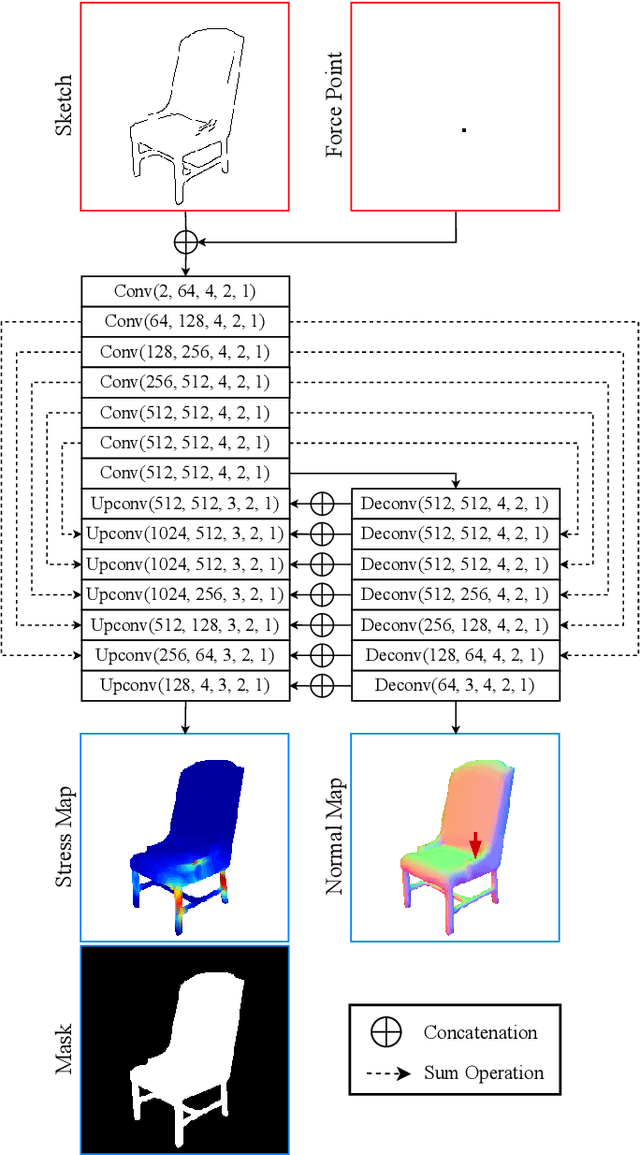
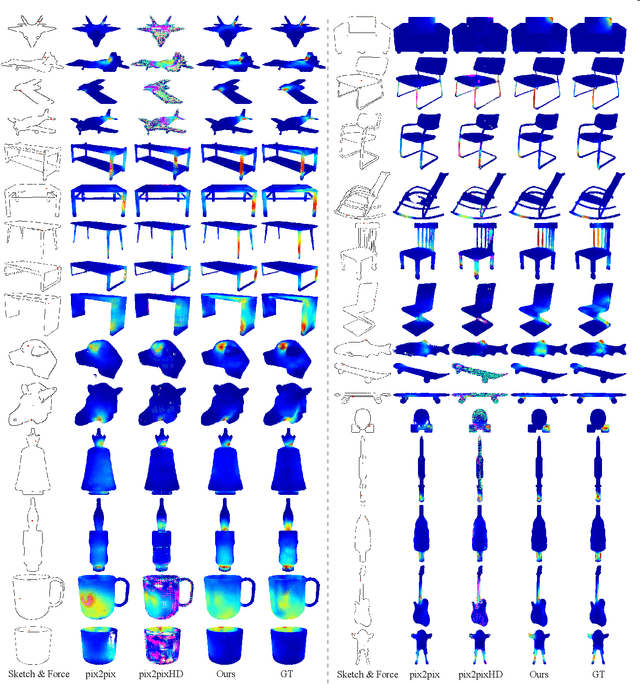

Abstract:In the process of product design and digital fabrication, the structural analysis of a designed prototype is a fundamental and essential step. However, such a step is usually invisible or inaccessible to designers at the early sketching phase. This limits the user's ability to consider a shape's physical properties and structural soundness. To bridge this gap, we introduce a novel approach Sketch2Stress that allows users to perform structural analysis of desired objects at the sketching stage. This method takes as input a 2D freehand sketch and one or multiple locations of user-assigned external forces. With the specially-designed two-branch generative-adversarial framework, it automatically predicts a normal map and a corresponding structural stress map distributed over the user-sketched underlying object. In this way, our method empowers designers to easily examine the stress sustained everywhere and identify potential problematic regions of their sketched object. Furthermore, combined with the predicted normal map, users are able to conduct a region-wise structural analysis efficiently by aggregating the stress effects of multiple forces in the same direction. Finally, we demonstrate the effectiveness and practicality of our system with extensive experiments and user studies.
Sketch Beautification: Learning Part Beautification and Structure Refinement for Sketches of Man-made Objects
Jun 09, 2023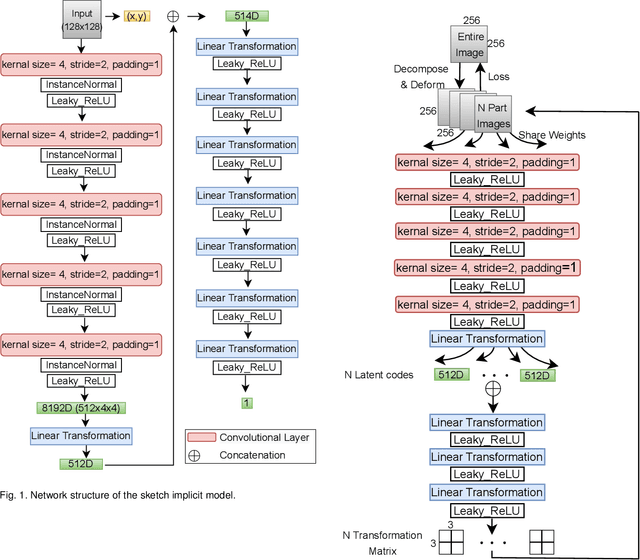
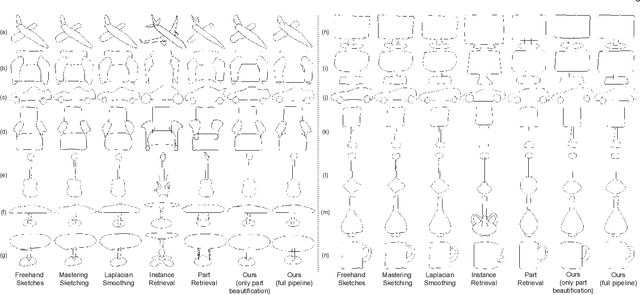
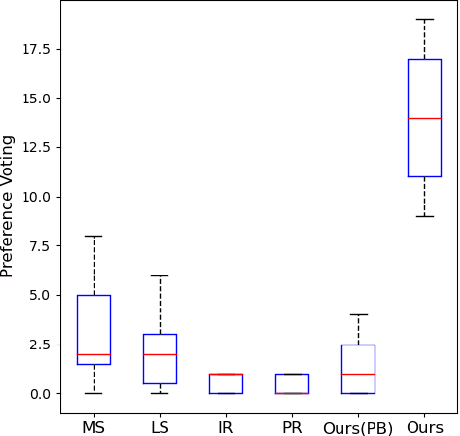

Abstract:We present a novel freehand sketch beautification method, which takes as input a freely drawn sketch of a man-made object and automatically beautifies it both geometrically and structurally. Beautifying a sketch is challenging because of its highly abstract and heavily diverse drawing manner. Existing methods are usually confined to the distribution of their limited training samples and thus cannot beautify freely drawn sketches with rich variations. To address this challenge, we adopt a divide-and-combine strategy. Specifically, we first parse an input sketch into semantic components, beautify individual components by a learned part beautification module based on part-level implicit manifolds, and then reassemble the beautified components through a structure beautification module. With this strategy, our method can go beyond the training samples and handle novel freehand sketches. We demonstrate the effectiveness of our system with extensive experiments and a perceptive study.
SketchDesc: Learning Local Sketch Descriptors for Multi-view Correspondence
Jan 17, 2020

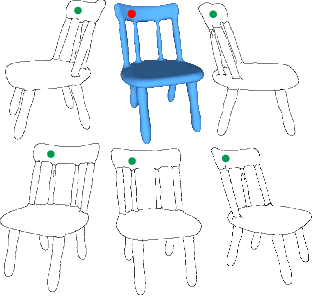
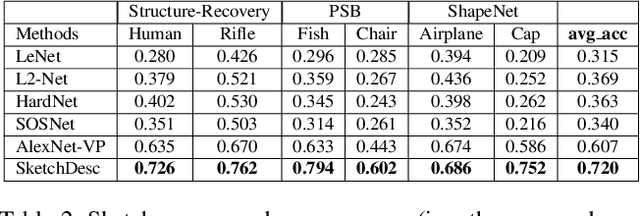
Abstract:In this paper, we study the problem of multi-view sketch correspondence, where we take as input multiple freehand sketches with different views of the same object and predict semantic correspondence among the sketches. This problem is challenging, since visual features of corresponding points at different views can be very different. To this end, we take a deep learning approach and learn a novel local sketch descriptor from data. We contribute a training dataset by generating the pixel-level correspondence for the multi-view line drawings synthesized from 3D shapes. To handle the sparsity and ambiguity of sketches, we design a novel multi-branch neural network that integrates a patch-based representation and a multi-scale strategy to learn the \pixelLevel correspondence among multi-view sketches. We demonstrate the effectiveness of our proposed approach with extensive experiments on hand-drawn sketches, and multi-view line drawings rendered from multiple 3D shape datasets.
 Add to Chrome
Add to Chrome Add to Firefox
Add to Firefox Add to Edge
Add to Edge